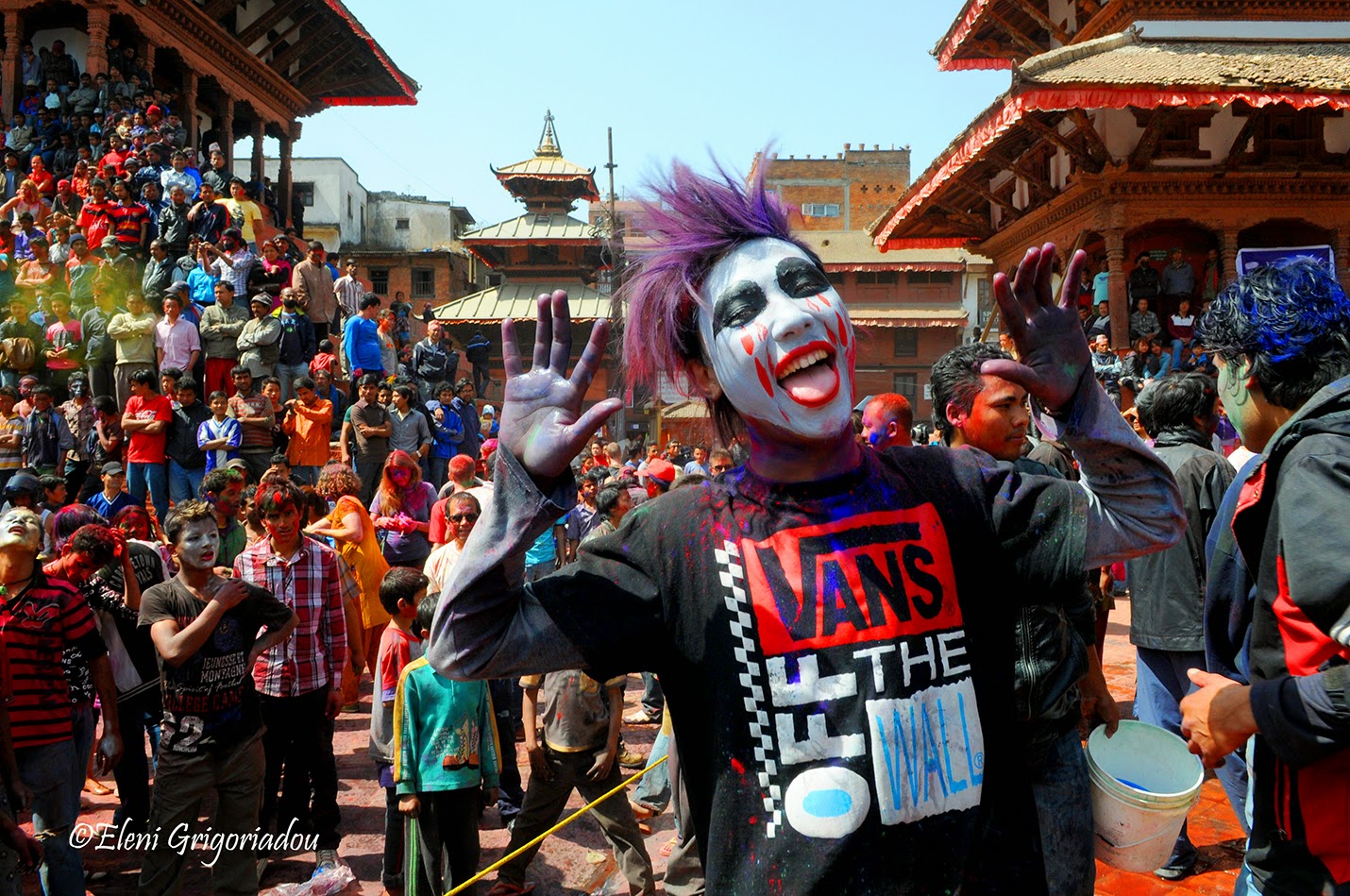Holi or faagu, is a Hindus religious festival, falling in the month of March, Faagu Purnima (full-moon day) according to Nepali calendar. Holi is considered as second biggest festival after Diwali, is also known as festival of Colors and is celebrated to enjoy the victory of good over evil. It welcomes spring season and hence it is also called a spring festival.
In most regions Holi is celebrated for two days.
The first day is known as Jalanewali
Holi - the day when Holi bonfire is done. The second day is known as Rangwali
Holi - the day when people play with colored powder and colored water.
On this day, all young and old, usually garbed in white costume, wearing red-powder on their foreheads, and varieties of liquid colors thrown on their white kurta pyzama or pant shirts, wander in groups from place to place reaching their friends, relatives, kith and kin, hugging each other, receiving and offering the red-powders on foreheads.
The frolic and fight with colors
occurs in the open streets, open parks, outside temples and buildings. To add
intensity to the Holi mood or to forget their sufferings, perhaps, the youth
consume opium paste called Shiva buti or ghotta which adds momentum to the
festivity.
Moreover, sweets nad sarbat
mixed in opium paste are served among the Holi revelers.
In Holi, failing immediately after Shivaratri, the festival of worshipping Lord Shiva, bhang (opium paste) is abundantly used in all sweets and sweet drinks which the Holi makers eat and drink to create the mood of Holi festivity.
 In Hindu culture, the stimulating substances like opium and marijuana are considered Holy ingredients used by Lord Shiva-considered as Shiva’s offerings. I was lucky that i had the chance to celebrate this colorful festival with the locals in Kathmandu Durbar Square, the major site of Holi celebration in Nepal, on March 2012.
In Hindu culture, the stimulating substances like opium and marijuana are considered Holy ingredients used by Lord Shiva-considered as Shiva’s offerings. I was lucky that i had the chance to celebrate this colorful festival with the locals in Kathmandu Durbar Square, the major site of Holi celebration in Nepal, on March 2012. It was a day filled with, smiles, laughters, loves, happiness, music, dance, and colors.
And, keep in mind that to capture the moment of Holi, you have to be the
part of it!!!





